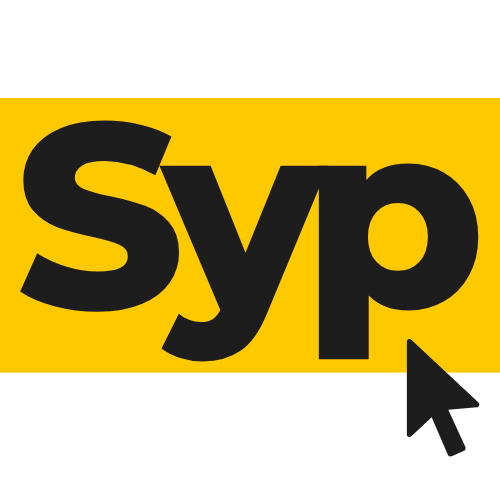Competency-based interviews in the UK focus on a candidate’s past experiences to predict future performance. The secret to nailing these interviews is to prepare clear, specific examples that show how skills were applied in real situations.

Candidates should use the STAR method—Situation, Task, Action, Result—to structure answers clearly and directly. This method helps interviewees demonstrate their abilities without rambling or leaving out important details.
Understanding what employers want and practising relevant examples can make a big difference. Those who prepare thoroughly can confidently handle competency questions and improve their chances of success.
Understanding Competency-Based Interviews

Competency-based interviews focus on specific skills and behaviours required for a role. They use structured formats and target essential abilities sought by UK employers. Candidates must provide clear examples that show how they meet these criteria.
What Sets Competency-Based Interviews Apart
These interviews differ from traditional ones by asking candidates to prove their skills with real past experiences. Instead of hypothetical questions, they focus on what the candidate has actually done. This helps employers predict future performance based on past behaviour.
Questions usually start with prompts like “Tell me about a time when…” or “Give an example of how you…”. The aim is to evaluate traits such as teamwork, problem-solving, and communication. Answers must be detailed, showing clear evidence of the skill in use.
Key Competencies UK Employers Seek
UK employers look mainly for skills that fit the job and company culture. Some of the most common competencies include:
- Communication: Sharing information clearly and listening well.
- Teamwork: Collaborating effectively with others.
- Problem-solving: Finding solutions under pressure.
- Organisation: Managing time and resources efficiently.
- Adaptability: Adjusting to change and new challenges.
Employers often pick competencies that match their sector. For example, customer service roles focus on communication and patience, while technical jobs prioritise problem-solving and attention to detail.
Common Structures and Formats
Competency questions often follow the STAR method: Situation, Task, Action, Result. Candidates describe the context (Situation), their role (Task), what they did (Action), and the outcome (Result). This keeps answers clear and structured.
Interviews may be one-on-one, panel, or online video calls. Format varies but the core remains the same: detailed, behaviour-based answers. Some interviews include tests or role-plays alongside questions to assess practical skills.
Using STAR helps candidates stay focused, ensuring they don’t skip important details. It also makes it easier for interviewers to compare different candidates fairly.
Analysing Job Descriptions for Core Competencies

Careful reading of the job description helps spot what the employer values most. It shows which skills and experiences are needed for the role and points out what to focus on during the interview.
Decoding Essential and Desirable Criteria
Essential criteria are the skills and qualities an applicant must have to be considered for the job. They are usually clearly listed and are non-negotiable. For example, communication skills or specific software knowledge might be essential.
Desirable criteria are additional skills that make a candidate stand out but are not mandatory. These might include extra qualifications or experience in related fields. It is still important to prepare examples that show these abilities.
Candidates should highlight their experience that matches both essential and desirable criteria when answering competency questions. This shows they meet the minimum requirements and have added value.
Identifying Transferable Skills
Transferable skills are abilities gained in one job or situation that apply to the new role. Examples include teamwork, leadership, or problem-solving. These are valuable, especially when switching industries or roles.
The job description might not always name these skills directly. Candidates need to read between the lines and connect their past roles to the demands of the new job.
Listing transferable skills with clear examples helps demonstrate flexibility and readiness. This improves the chance of success in competency-based interviews by showing suitability beyond just specific experience.
Crafting Impactful STAR Responses

Answering competency-based questions clearly requires a well-planned approach. Each response should follow a logical order, avoid common mistakes, and highlight real results to stand out.
Structuring Your Answers Effectively
The STAR method stands for Situation, Task, Action, and Result. Start by briefly describing the Situation to set the context. Next, explain the Task you were assigned or the challenge you faced.
Then, focus most of your answer on the Action you took. Be specific about your role and the steps you followed. Finally, describe the Result clearly, showing what you achieved and how it helped.
Keeping answers brief but detailed helps interviewers follow the story without losing interest. Using this clear order builds a solid, memorable response.
Avoiding Common Pitfalls in STAR
Many candidates make answers too vague or long. They might focus too much on the situation and forget the action or result. Avoid repeating general phrases like “I worked well with others” without examples.
Another mistake is blaming others or avoiding responsibility. The interviewee should always highlight their specific contributions honestly.
It is important not to ramble. Staying concise and to the point keeps answers sharp and relevant. Practising answers out loud can help spot these common errors.
Demonstrating Measurable Achievements
Strong STAR answers include facts or numbers to prove success. For example, saying “increased sales by 15%” is clearer than “improved sales.” This helps interviewers see the real impact.
Even if precise data isn’t available, speak about outcomes like “reduced waiting time” or “completed the project two weeks early.” These details set good candidates apart.
Showing measurable achievements reflects a results-driven mindset, valued in UK job markets. It also makes answers more convincing and easier to remember.
Demonstrating Competencies with Evidence

Showing clear proof of skills is essential in competency-based interviews. Choosing the right examples and mixing work and personal experiences helps create a strong impression. The evidence must be relevant and well-explained to match the competencies asked.
Selecting Relevant Examples
Candidates should pick examples directly linked to the competency being tested. It is best to use specific situations where the skill was clearly demonstrated. For instance, if asked about teamwork, describing a project where they helped the team reach a goal works well.
The STAR method (Situation, Task, Action, Result) helps organise answers. This keeps the example clear and focused. Candidates must avoid vague or general answers that lack a clear outcome.
Examples from recent experiences are stronger because they are more likely to be accurate and detailed. Candidates should prepare several stories to cover different competencies confidently.
Balancing Professional and Personal Experiences
While work examples are preferred, personal experiences can be valuable when relevant. Candidates should choose personal stories that clearly show the same skill expected in a job.
Volunteering, sports, or community work often provide situations to showcase leadership, problem-solving, or communication. These can make answers stand out if professional examples are limited.
The key is making sure personal examples fit the question and show clear results. Mixing both types of experiences can give a fuller picture of the candidate’s abilities.
Practising and Refining Your Interview Skills
Preparation is crucial to improve performance in competency-based interviews. Candidates benefit from active practice and learning from critiques to sharpen their answers and delivery.
Mock Interview Techniques
Conducting mock interviews is one of the best ways to prepare. Candidates should simulate real interview conditions by having a friend, family member, or career coach ask common competency questions.
They should focus on using the STAR method (Situation, Task, Action, Result) to structure answers clearly. Recording these sessions can help identify weak points such as long pauses or unclear examples.
Regular practice reduces nervousness and helps build confidence. It also allows candidates to become comfortable explaining their skills in a concise way, matching what employers seek.
Receiving and Implementing Feedback
After practice interviews, candidates must seek honest feedback on both content and delivery. They should ask specifically about the clarity of answers, relevance of examples, and body language.
Constructive criticism enables them to correct mistakes or improve their storytelling. Adjusting answers to be more focused or adding measurable results can make a big difference.
It’s important to practise changes immediately to reinforce new habits. Continual refinement through feedback cycles ensures improvement before the actual interview.

